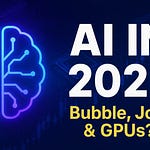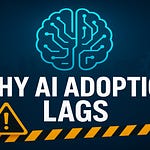Sources:
Epoch AI Research: https://epochai.org/data/notable-ai-models
Sam Altman’s Blog: https://ia.samaltman.com/
My Stuff:
New Era Pathfinders: https://www.skool.com/newerapathfinders/about
HEAVY SILVER: https://www.heavysilver.net/
🚀 Intelligence Explosion on the Horizon
Sam Altman recently published a blog post discussing the potential for an intelligence explosion. He predicts AI will become personal assistants, enable personalized education, and change jobs more slowly than some expect. Altman claims unprecedented prosperity and superintelligence could arrive in as few as 1000 days. However, his post contains mostly vague promises with few concrete claims.
📊 AI Progress Data from Epoch AI
New research from Epoch AI provides compelling data on AI progress. Training compute for AI models is doubling every 6 months. Training costs for frontier models double every 9 months. Language model capabilities are scaling faster than vision models. The amount of training data used is doubling every 8 months. Training time is increasing by 20% annually. Power requirements for AI training are doubling yearly. This data shows no signs of diminishing returns in AI capabilities.
🧠 Intelligence vs Other Constraints
While intelligence is a significant constraint in many domains, it is not always the primary limiting factor. Large scientific projects like the Large Hadron Collider and James Webb Space Telescope face constraints of money, time, energy, and materials more than intelligence. Even with superintelligent AI, many industries will still face physical and logistical constraints. Matter, energy, time, space, and entropy remain fundamental limitations on progress.
🤖 The Path to Superintelligence
Achieving superintelligence faces constraints of data, energy, and compute. Companies are working to address these limitations through nuclear power, fusion research, and massive data centers. However, expanding human knowledge often requires slow, expensive experiments that AI cannot circumvent. Within existing knowledge, AI can drive rapid progress in product development and applied research.
💼 Jobs and Automation
As AI and robotics advance, an "automation cliff" may occur where demand for human labor increases until suddenly dropping to zero for certain jobs. This transition will likely happen gradually across different industries. While some argue automation creates more jobs than it destroys, the long-term impact remains uncertain. Careful monitoring of employment data will be crucial as AI capabilities expand.
















